Wat Visun
Opening Hours: Daily from 08:00-17:00 Location: The temple is located on Wisunarat Road close to the city centre. Remarks: The usual etiquette with regards to visiting places of worship in Lao applies, no bare shoulders or legs and avoid touching any of the relics unless you are invited to do so. A respectful silence should also be maintained where possible. Wat Wisunalat (Vixoun, Visounnarath, Vixunhalat, Wisunarat) was originally built during the reign of King Wisunarat (or Vixoun, 1501-1520) in 1513 (some suggest 1512) and represents the earliest style, sometimes referred to as Luang Prabang Style I, of Lao temple architecture. This style also includes the sims of Wat That Luang and Wat Mai. Dating back to 1513 and the reign of King Wisunarat (Visoun), Wat Wisunarat is Luang Prabang’s oldest temple and was once home to the Prabang Buddhas. The history of the temple is colourful with it being originally crafted from wood before being burned by Black Haw riders in 1887. The Black Haw riders were part of the Black Flag military rebel group led by a Chinese commander at the end of the 1880s. Post invasion, it was rebuilt using stucco and brick and retains some original pieces including a stupa that was created in 1503 along with some other small Buddha icons although many were stolen during the Haw raid. Over the years the temple has also acted as a Museum of Religious Arts and as such now homes an array of religious artefacts and precious items relating to both Buddhism and the royal family. The temple is a celebration of early Lao architecture with wooden windows reflecting the Wat Phou Temple in the South of the country coupled with stucco work that is classic Luang. Restoration work was carried out in 1895 and then again in 1932. The Wisunarat temple is home to a small selection of richly gilded Buddhas and some ancient stones dating back to the 15th century. The stones were donated by Prince Phetsarat following the Black Haw bandit invasion. The Haw left with most of the priceless Buddha images made from jade, gold and precious gems by breaking open the stupa. Prior to invasion, Wat Wisunarat was once home to the revered Pha Bang Buddha from 1507 to 1715 which can now be viewed at the Royal Palace Museum. One of the temple’s most unique features is its unusually shaped stupa designed by the wife of King Wisunarat to be a lotus flower but referred to by locals as ‘the watermelon stupa’. Another distinguishing highlight is the European-style roof which slopes in a manner not usually seen in Laos. This is largely due to the French architects who helped with the rebuilding in the late 1980s. The temple is still functioning today and is open to visitors with plenty of information available about its fascinating history.
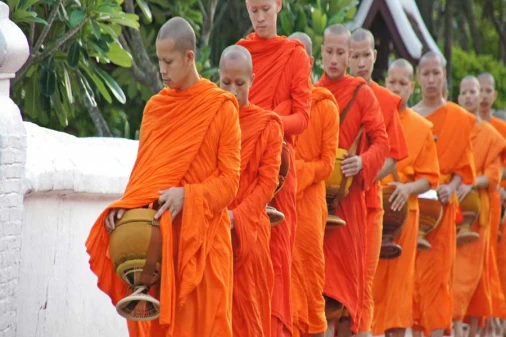
Alms Giving Ceremony
The UNESCO World Heritage City of Luang Prabang is the perfect place to see one of the most sacred Lao...
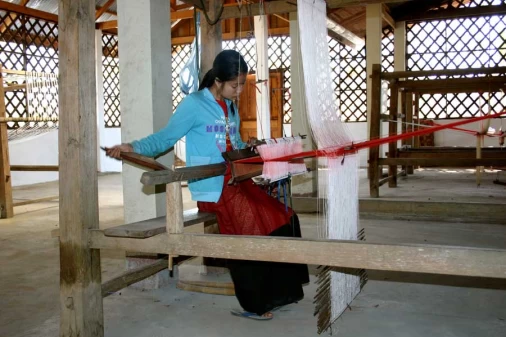
Ban Phanom
Ban Phanom is a village steeped in traditional textile making with all families in the village working...
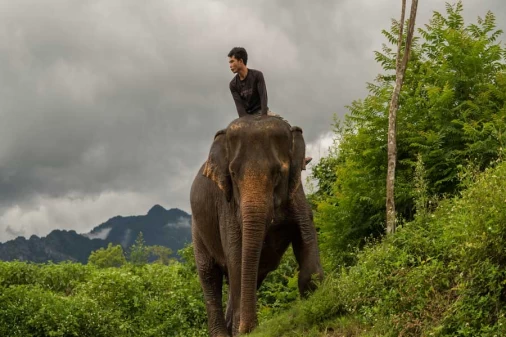
Elephant Village Sanctuary
Close to the banks of the Nam Khan River, the Elephant Village Sanctuary (also known as the Elephant...
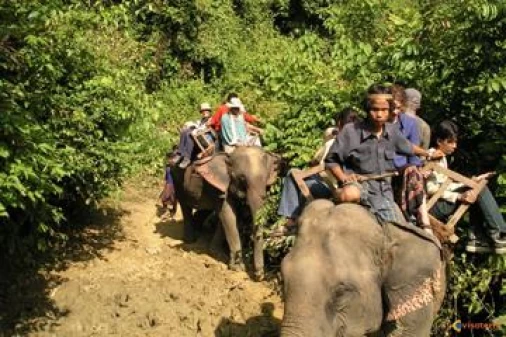
Elephant VIllage Santuary
Location: The Elephant Village Sanctuary is situated in the village of Xieng Lom 15km southeast of Luang...
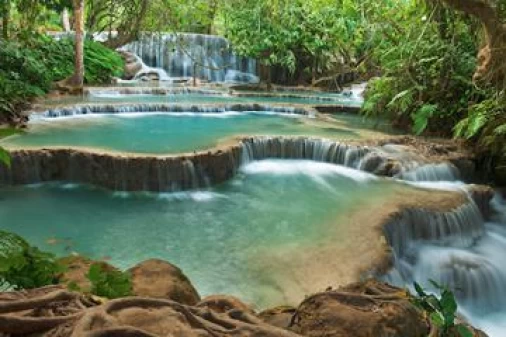
Kuang Sii Fall
Situated at about twenty miles from Luang Prabang, this is a large waterfall and can be reached by Touktouk...
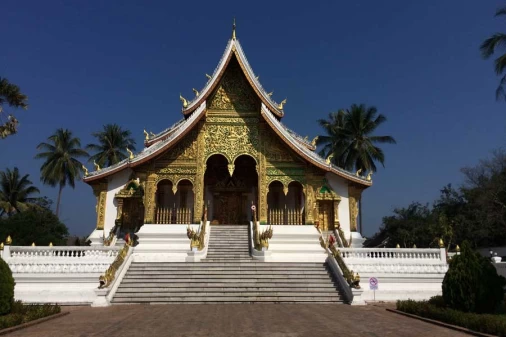
Luang Prabang Library
The Luang Prabang Library is a wonderful place to visit and offers the chance for you to give something...
You may also like
Treasures of Laos
- Depart Time:Daily
- Starts/Ends:Luang Prabang/Vientiane
- Tour type:Private Tours
- Travel Style:Nature & Adventure, Heritage Tours, Culture & History
- Activities:Local culture tours, Cultural, religious and historic sites tours, Countryside and village visits tours, City sightseeing tours
- Suitable for:Solo, Family, Group, Couple
- Age range:1 To 90 Years
- Operated in:English, French, Spanish, German, Italian
Highlights of Laos Tour
- Depart Time:Daily
- Starts/Ends:Luang Prabang/Pakse
- Tour type:Private Tours
- Travel Style:Nature & Adventure, Heritage Tours, Culture & History
- Activities:Local culture tours, Cultural, religious and historic sites tours, Countryside and village visits tours, City sightseeing tours
- Suitable for:Solo, Family, Group, Couple
- Age range:1 To 90 Years
- Operated in:English, French, Spanish, German, Italian
World Heritage Explorer Laos
- Depart Time:Daily
- Starts/Ends:Vientiane/Luang Prabang
- Tour type:Private Tours
- Travel Style:Heritage Tours, Family Tours, Culture & History
- Activities:Sightseeing Tours, Local culture tours, Cultural, religious and historic sites tours, Countryside and village visits tours
- Suitable for:Solo, Family, Group, Couple
- Age range:1 To 90 Years
- Operated in:English, French, Spanish, German, Italian
Best of Laos Tour 7 Days
- Depart Time:Daily
- Starts/Ends:Vientiane/Luang Prabang
- Tour type:Private Tours
- Travel Style:Nature & Adventure, Heritage Tours, Culture & History
- Activities:Local culture tours, Cultural, religious and historic sites tours, Countryside and village visits tours, City sightseeing tours
- Suitable for:Solo, Family, Group, Couple
- Age range:1 To 90 Years
- Operated in:English, French, Spanish, German, Italian
Highlights of Laos 6 Days
- Depart Time:Daily
- Starts/Ends:Vientiane/Luang Prabang
- Tour type:Private Tours
- Activities:Local culture tours, Cultural, religious and historic sites tours, Countryside and village visits tours, City sightseeing tours
- Suitable for:Solo, Family, Group, Couple
- Age range:1 To 90 Years
- Operated in:English, French, Spanish, German, Italian
Highlights Of Southern Laos 10 Days
- Depart Time:Daily
- Starts/Ends:Vientiane/Pakse
- Tour type:Private Tours
- Travel Style:Nature & Adventure, Heritage Tours, Culture & History
- Activities:Local culture tours, Cultural, religious and historic sites tours, Countryside and village visits tours, City sightseeing tours
- Suitable for:Solo, Family, Group, Couple
- Age range:1 To 90 Years
- Operated in:English, French, Spanish, German, Italian
 France
France  Spain
Spain  German
German  Italian
Italian 







 Vietnam Tours
Vietnam Tours  Cambodia Tours
Cambodia Tours  Myanmar tours
Myanmar tours  Thailand Tours
Thailand Tours  Laos Tours
Laos Tours